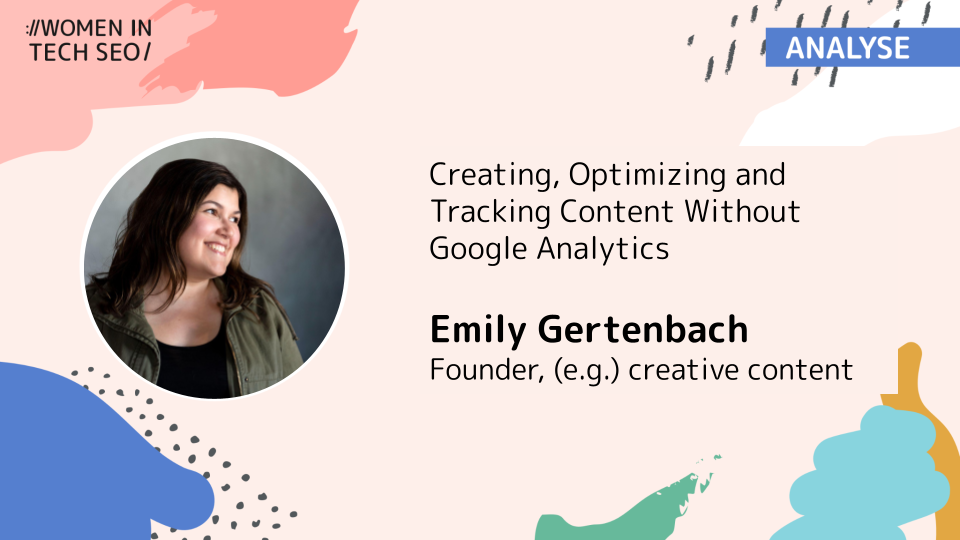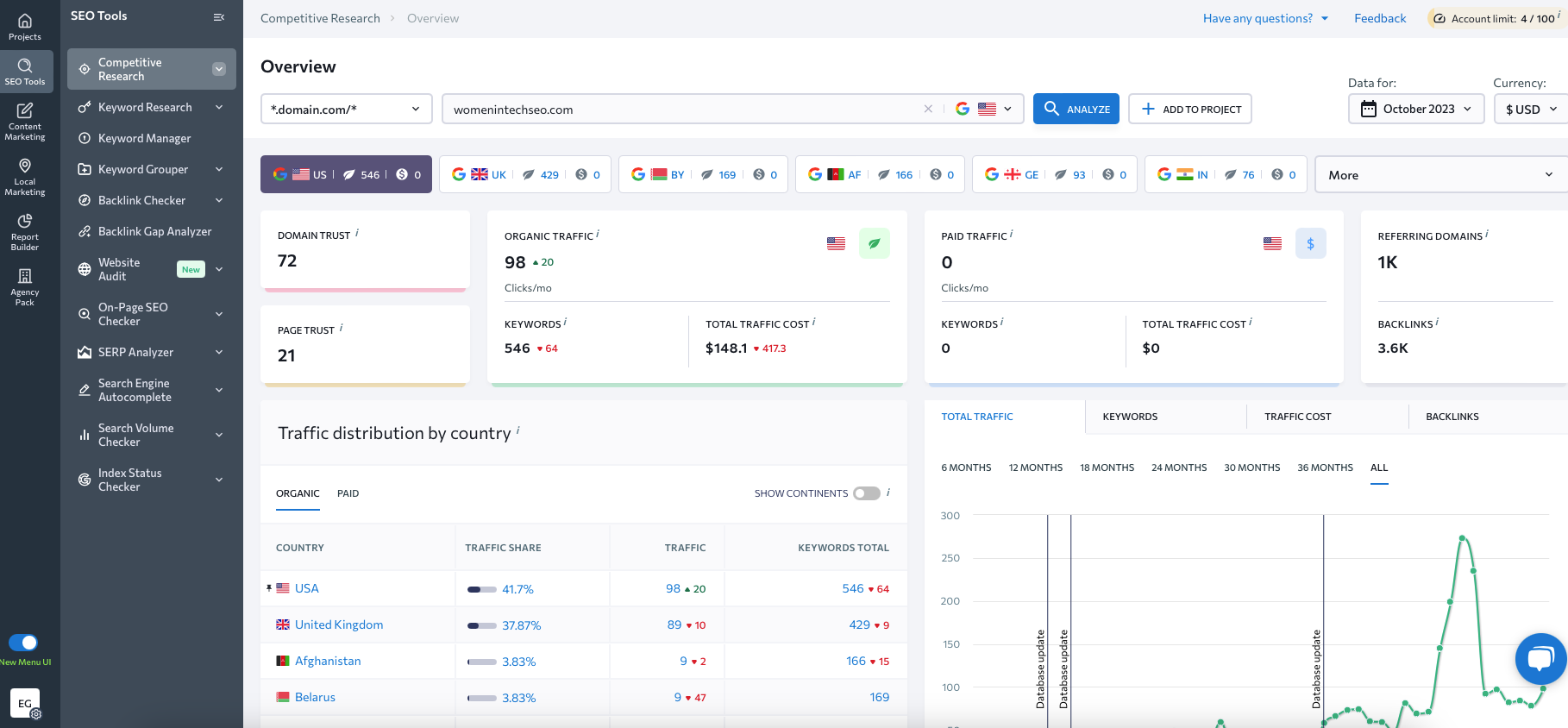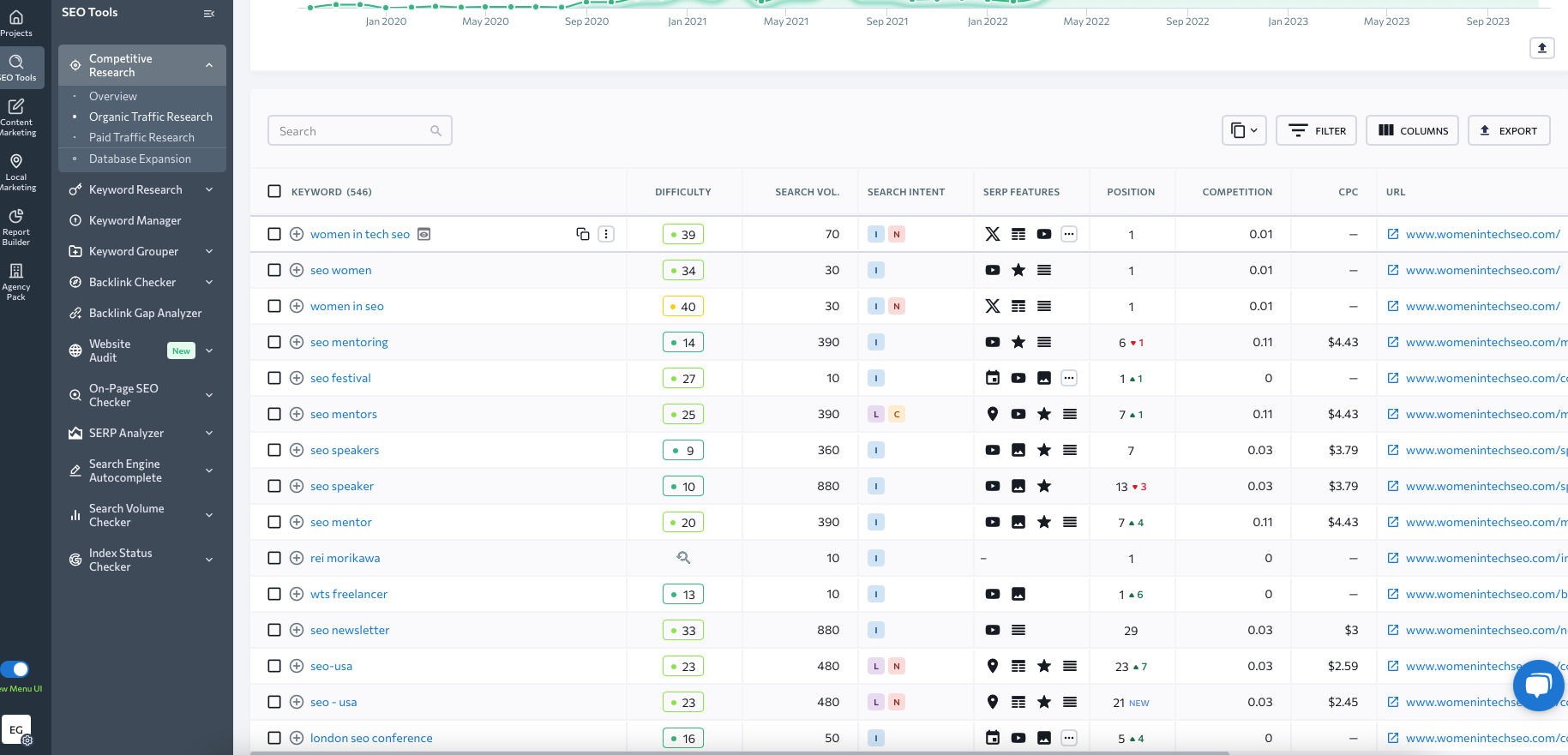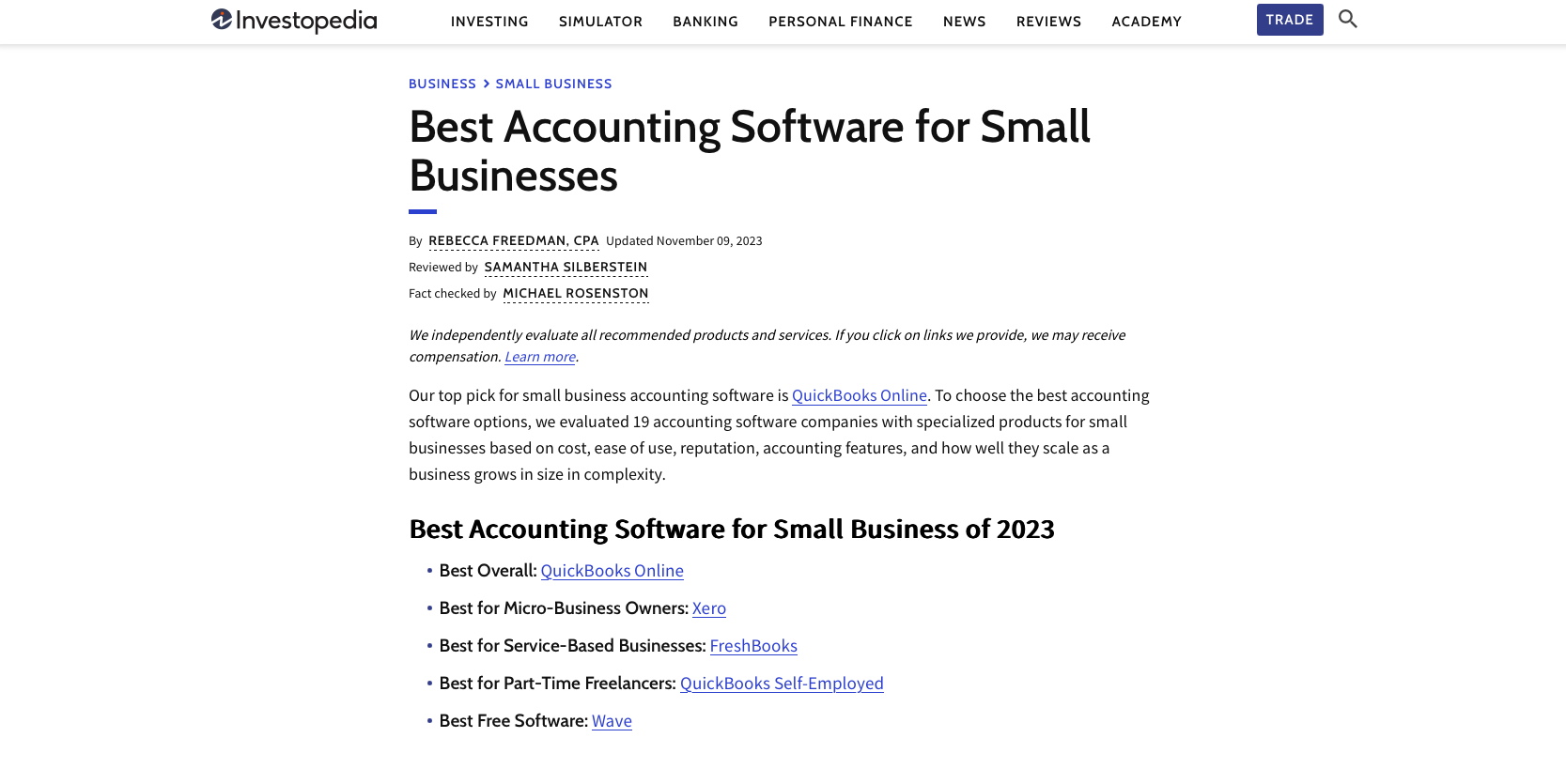🎤 WTSFest Philadelphia up next on October 7th
🎟️ Tickets also on sale for Melbourne, London, & Portland
🎤 WTSFest Philadelphia up next on October 7th
🎟️ Tickets also on sale for Melbourne, London, & Portland

Author: Emily Gertenbach
Last updated: 07/02/2024

Data collection is a huge part of an SEO's day-to-day existence — but what if you could do more, with less?
When it comes to content creation and optimization, I strongly believe you don't need to access standard website analytics data in order to improve your SERP rankings.
Perhaps you're here because you're interested in lessening your dependence on tracking tools for privacy reasons. Or maybe you've taken on a project for a client and can't get access to their internal data. Whatever the reason, you aren't at an impasse — you can absolutely create high-ranking content that meets EEAT guidelines without looking at Google Analytics.
Google Analytics isn't actively harming you, your visitors, or your website in the vein of say, malware.
However, it contributes to an erosion of privacy, though — an insidious, if slower-growing, problem. If you've ever heard the phrase "if the service is free, you're the product," that applies here. This means that when our access to something, often a piece of software, like Google Analytics, is monetarily free, we're still paying with it through another currency: data.
This might seem like a fair tradeoff, but the thing is, there are numerous rules around how websites collect and store data. These vary based on where you do business, and where your visitors live. It can be a serious responsibility. And yes, sometimes taking on that responsibility is deemed a worthwhile tradeoff in order to conduct specific business activities.
But sit with this thought for a minute: nearly every action you take online is tracked. A large part of that data is collected or fed into Google. As of August 2023, 66.41% of global desktop internet users relied on Chrome. This number jumps to 66% when we look at global mobile browser usage. And according to BuiltWith, there are over 32.4 million websites using Google Analytics today.
We feed data into Google, and we rely on receiving data from Google to do our jobs.
If you feel uncomfortable or unsure about the level to which a single corporate entity tracks you, then I think it's worth taking some time to examine ways that you can potentially reduce your reliance on Google's most granular data sets.
I'm an SEO professional who eschews Google Chrome, uses Firefox or Safari, and keeps my cookie and ad tracking preferences locked down tight. You don't have to go that far if you don't want to — but you can begin re-evaluating the role of Google's data in some of your SEO activities, starting with content optimization.
In my experience, marketers often think they need more analytics data than they actually do.
That included me, too, in the past! For a long time, I thought I needed to capture as much data on website visitors as possible — referral sources, click flows, heat maps, you name it. I'd then look at this data when planning or creating content. But one day, it hit me: I wasn't actually using all of what I was collecting.
It's entirely possible to bring people to your or your clients' websites with no on-page analytics data for said site. I'm talking no tracked links, no Google Analytics data, no tag managers, no pixels — nada.
When capturing traffic through organic SERPs, (and seeking to boost your rankings), it doesn't really matter whether your visitors first heard about your brand on a social media platform or a subway platform. All that matters is that they have a question — and that you can predict what their question will be.
When we create content with the goal of improving a site's ranking in the SERPs and bringing in new website visitors from search engines, we're only concerned, at this point, with getting those searchers to click on our website in the SERP.
And yes, we will ultimately want them to take actions on our site — but that process moves into the realm of conversion rate optimization and other marketing activities. We have to get visitors to our site before we can ever explore improving their conversion rate. Our content is the entry point.
When we create this content without using Google Analytics, the goal is still to attract more visitors through organic search — but to do so in a way that:
The only thing you truly need to follow the steps I'll lay out is access to a keyword research tool like SE Ranking or Ahrefs.
I do strongly recommend that you use a paid tool versus a free piece of keyword software.
Many of the free keyword tools on the market rely on Google Keyword Planner data, which is meant for paid advertising. Paid tools like Ahrefs use their own search crawlers and data collection methods to get metrics around organic search queries and rank.
Yes, free tools can work for SEO in a pinch, but for the best results, you'll want a dedicated tool like the ones listed above.
It's also helpful to have access to a semantic keyword tool like Clearscope or MarketMuse. If those types of tools are out of your budget, that's okay — as long as you have your primary keyword research tool, you’re set.
Services like AlsoAsked or AnswerThePublic can be helpful during this process, too, and both offer a limited number of free searches per day.
So why is a good, paid tool imperative to the process? It's because these tools let us see key organic search data like:
Those are the actual metrics you need in order to optimize content. That's it. If you focus on those elements alone, and create a powerful piece of content that meets EEAT guidelines, you can reach a good spot on the SERPs.
And it’s all without tracking your website visitors or getting access to a client's Google Analytics account. While you're still viewing what people search and click online, you're working with a bigger and more anonymized pool of data. Plus, you're not tracking this data through your website.
While we've covered a lot of what we do need, it's just as important to discuss what we don't need to capture more traffic through organic SERPs.
So, from here on out, you can forget about all of the metrics you access through Google Analytics, like:
If you're used to looking at this data as part of your content planning or optimization process, it might feel uncomfortable to set it aside.
But think about how freeing it might feel to not experience data overload.
Paring down the amount of data we're using is not only good for our customers' privacy, but it's also good for our decision-making process. When you can isolate key data points, you can make corresponding decisions faster and more efficiently.
If you're still not sure about all this, take some time over the next month to log which data points you turn to when optimizing content using your usual methods. Chances are, you'll find that you're only using a portion of the data you collect.
Now that we've established what data you need (and can find) via your SEO tool, it's time to dig in.
The first stage in your GA-free keyword analysis is to evaluate what keywords you're already ranking for.
This is what a lot of folks turn to Google Analytics or Google Search Console for, but you can find the data in other ways.
Start by plugging the site you're writing for into your SEO tool's URL analysis feature. This is typically part of a platform's competitor research functionality. Here's what it looks like in SE Ranking:

Next, open up the keyword report produced for your domain. Here, you can see the core keyword stats about every term you already appear in SERPs for, as well as your position.

I like to filter this list by positions 15-25 to find the keywords that a site already has some traction for, but can see a noticeable rank improvement.
If the list still feels far too expansive, try adjusting the difficulty filter to be between zero and 20, or narrow the results to keywords that include a featured snippet on the SERP.
You'll ultimately want to select some keywords that you'd like to improve your rank for. This can be one of the quicker ways to bring up your site's traffic and in turn help your new content efforts work even better and faster.
You'll need to find some new keywords to target, too, of course. This is an area where stepping away from your analytics (and your Search Console) accounts can help free you up to focus on new possibilities.
Optimizing the pages that we've already created is important. But, if we're only focused on the terms that are currently getting us clicks, we may miss out on some new opportunities that we weren't even aware of.
Your target audience might be searching in new ways, using new terms, or paying sudden close attention to a competitor — all of which you can more easily see through your SEO keyword research tool of choice.
If I'm honest, a lot of the work in this stage is more of an art than a science. You'll need to get creative and try to think as if you were your ideal website visitor.
There are a few ways to go about this stage of the process:
If you go really deep on the competitor analysis, you can actually build out an entire content strategy for a website or a client in this manner... Even if you don’t have access to their analytics account.
Semantic keywords are what I've found to be the real star of the GA-free content optimization process. These are short terms related to your primary keyword(s), and they provide additional context to search engines. They're also useful to have on hand when creating article outlines, as they can help you go deeper and show more expertise than you might have thought.
The tricky, but necessary, part is getting really specific and broad at the same time. Take the term "user experience software" as an example. What comes to mind when you think about UX design? You might be familiar with:
These are all important contextual points for both readers and search engines, so you'd want to put them in your content!
But they're also terms that most of your competitors will put into their content about user experience software. If we expand our semantic keyword search and drill down into the topic niche even more, we might come up with terms like:
A dedicated semantic keyword research tool can make this part of the process faster, but it's not necessary. You can also find these terms by paying attention to the "related keywords" section of the reports you ran in step two. Plus, you can get ideas by typing your primary keywords into Google Trends or by running a search and looking at the words — not necessarily the entire sentences — that appear in the "People Also Asked" section of a SERP.
Now that you've gathered together a list of primary and semantic keywords, it's time to put all of your research into action.
I recommend starting with an outline, not a blank document and keyword list.
If you start your writing process by pasting all of your semantic keywords at the top of a blank doc (or drafting directly in a semantic keyword tool) you may focus less on the natural flow of your content — and more on how to force all of those terms in. We don't want to do this. If your content doesn't flow naturally, read conversationally, and showcase your expertise, it will not perform well in the SERPs — no matter how many semantic keywords you use.
Instead, I find it helpful to look at the list of semantic keywords while drafting my outline.
I use these terms to help me come up with headers, and may even leave notes for myself about specific terms I'd like to work into a section. But I don't worry about putting all of the semantic keywords in said outline.
I write the outline, give the list another look, and then put it aside until I'm done.
After the draft is finished, I pull out my list of semantic keywords again and see if there are any near-synonyms in the document. I then replace them with a semantic keyword.
I don't stress too much about getting EVERY semantic keyword in the document, either. If it feels forced to do so, it's probably going to read as forced to your audience.
A similar process applies to enhancing existing content.
Rather than starting with an outline from scratch, you're going to want to take a look at competing content in your target SERP.
The goal isn't to copy your competitors, of course, but to take notes on what they're covering — and then figure out how you can go deeper or broader on the relevant topic. Your semantic keyword list can give you an idea of what to focus on here, as well.
Let's say I've got a blog post on my hands that shows up in the 15th spot when I search for a related keyword. The blog post is a numbered list of the top 12 accounting software platforms used by small business owners.
If I check out the SERP, I can see that the first two results are actually non-numbered lists that break down each platform by "best for [insert use case]".

Let’s imagine that I want to update my list to have a similar format — organized by use, not by a number — and then see how I can expand. In the Investopedia article pictured above, they're covering five use cases.
I might elect to expand my article to include:
This is just an example — the changes you make will depend upon the SERP and the audience you intend to target with your content.
You can monitor the performance of your content in the SERP without using Google Analytics, too.
This is great to try whether you're simply tired of the GA4 changes or you want to see how your content for a client (that you don’t have analytics access for) performs over time. All you need is your trusty keyword research tool, your list of primary keywords, and the target domain.
First, find the rank tracker in your keyword research tool. Set up the domain as a new project or tracked entity. Next, enter your keywords and save them to a list associated with the domain. You'll be able to log in (or even set up automatic reports) to see how your content is performing over time.
Many of the tools will even show you your average rank for a specific domain — useful if you've created a lot of content for one client and want to see how it performs in SERPs.
Obviously this won't show you how many clicks or visits you got directly from this content. But you can glean some information by putting a URL into the competitor analysis tool like we did at the beginning of our keyword research process — or charting when your new content hit the SERP for the first time and watching how total website visits change from that point (which you can also see via your keyword tool).
If you're a new freelancer taking one-off projects, you can use this method to watch how your content performs over time, even after you stop working with a specific client. Even if some figures you walk away with are ballpark numbers, it's useful for communicating (and feeling confident in!) the impact of your work.
And if you're an established SEO with a set of regular clients, or in an in-house role, exploring how you can do parts of your job without Google Analytics, this can help you start to reduce your company's reliance on, and responsibility for, data collection.
Ultimately, I'm of the belief that there are more ways we can all move away from total reliance on Google Analytics, or tracking our website visitors' movements. It's a continual exploration and work in progress — while I don't have all the answers yet, I do know that removing Google Analytics from your content optimization process is a solid place to start.